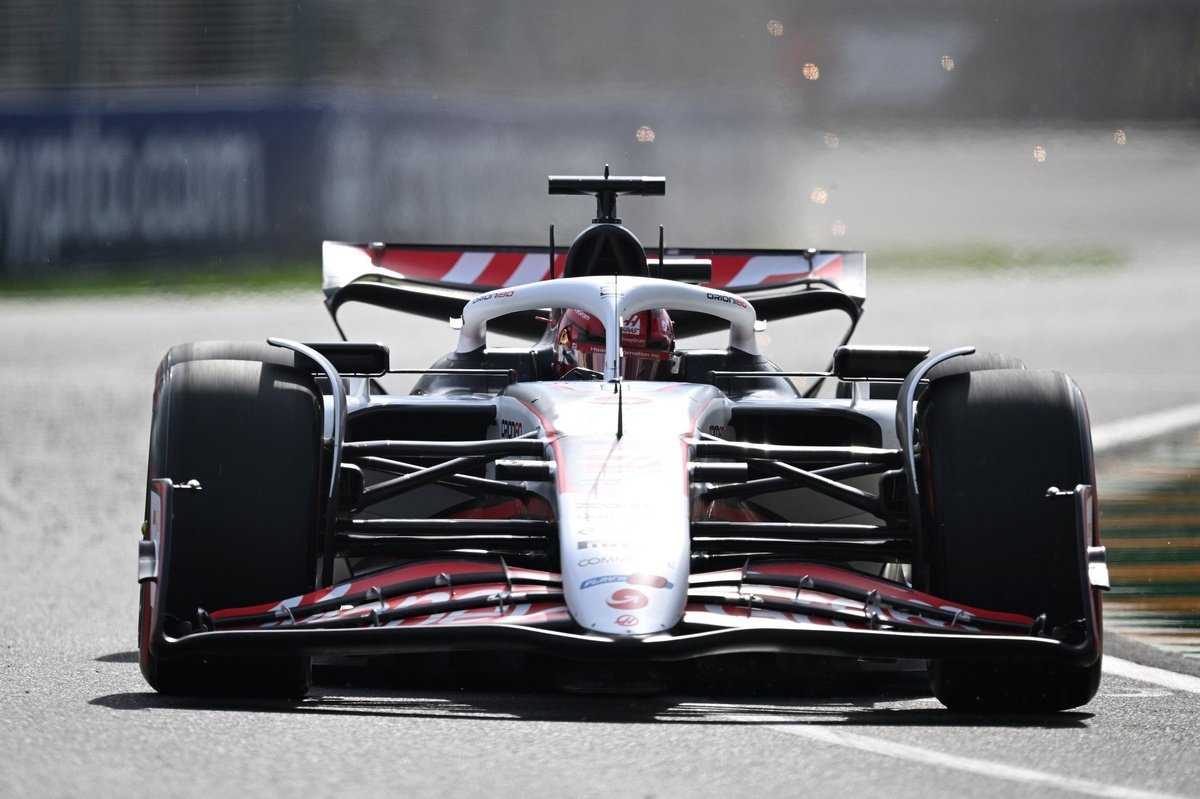
Haas group boss Ayao Komatsu admitted he thought one thing was damaged when his Components 1 outfit logged its preliminary FP1 laps on the Australian Grand Prix, and would not count on a direct repair to its high-speed nook issues.
After following an analogous run plan in Bahrain testing to what it had run in 2024, by sacrificing all efficiency runs for long-run tempo and tyre administration exploration, Haas didn’t have many indications of its true tempo versus the remainder of the sphere.
However the group arrived in Australia propping up the order, which Komatsu revealed had shocked the American squad. A tempo deficit in high-speed corners, notably Turns 9 and 10, was seen as the primary wrongdoer.
Komatsu defined that dropping a smidgen of efficiency within the low-speed corners to use it to the higher-speed activates the circuit was the one approach to carry the automotive right into a “respectable” efficiency window.
“I do not suppose it is a one-off,” Komatsu mentioned. “It was an enormous shock, we weren’t anticipating that in any respect based mostly on Bahrain testing.
“Bahrain testing wasn’t excellent, however we weren’t anticipating it anyplace close to as dangerous as Melbourne. In FP1, on a really quick lap when the automotive went out. I believed both one thing was damaged or one thing is totally out of the ballpark.
“Then once we established, proper, nothing’s damaged, we have got an enormous subject. It was fairly clear the issue was in excessive velocity, Flip 9, Flip 10. Then we simply labored and labored to make these corners higher with the expense of low velocity.
Ayao Komatsu, Haas F1 Crew
Picture by: Simon Galloway / Motorsport Photos
“However even then, low-speed corners are okay, not nice – however in comparison with the problem we had in Turns 9 and 10, it is evening and day. So then by Q1, we managed to get Flip 9 roughly respectable. However Flip 10, nonetheless nowhere.
“We perceive why, however with the problems we now have, we can not resolve it for all corners, proper? So I believe a minimum of we took appropriate steps throughout the weekend.”
Komatsu mentioned that the group deliberate to develop its method via the issue and “deal with it head-on” reasonably than quit on it and deal with 2026, because the group feels it has an understanding of the place the issue lies.
He reckoned that the outfit wouldn’t have the ability to implement an answer for various races, given the severity of the issue. Komatsu believes it’s associated to the automotive’s interface with the bottom at low experience heights.
“I believe that is the most effective we might do with the Melbourne circuit traits, that our automotive’s weak spot that we found in Melbourne after which traits of Flip 10 as a nook. No less than then we now have clear understanding of what the problem is.
“Then subsequent level is to grasp which a part of the automotive we have to modify, or which a part of the automotive has the sensitivity to unravel this efficiency subject. So up up to now, we’re moderately clear.
“Then after all, subsequent is, how are we going to discover a resolution? A few of them might be moderately short-term options, however a few of them will probably be an iterative course of, each in CFD and wind tunnel.
“So you are not going to see an answer for some races – it is fairly extreme.”
Images from Chinese language GP – Thursday
On this article
Jake Boxall-Legge
Components 1
Haas F1 Crew
Be the primary to know and subscribe for real-time information electronic mail updates on these matters
Subscribe to news alerts
Trending Products




